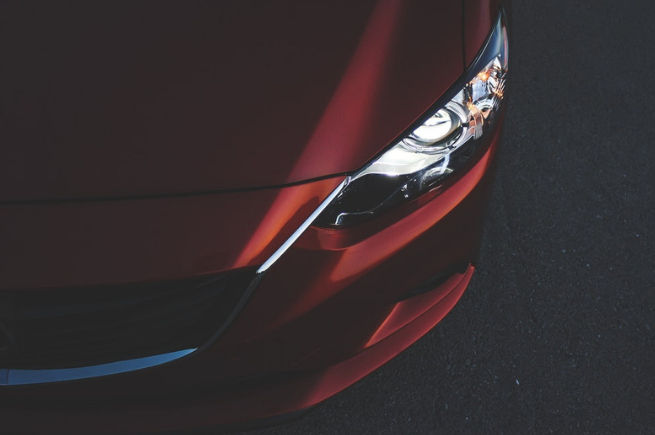Inspiration in advertising: does it work?
As part of our Emotions UNcovered: Inspiration season we’ve dug into our emotional database of 2.2 million audience reactions to discover how Inspiration is used in advertising across the globe, and what effects it has on audiences.
From Apple’s ‘1984’ SuperBowl spot to Nike’s latest ‘Dream Crazy’ campaign, Inspiration is a powerful emotion that brands and advertisers have leveraged in their marketing efforts for decades to create emotional connections with their brand and differentiate themselves from competitors. Our data shows that it’s the second most common emotion in advertising. Across all the ads we’ve tested globally, an average 7% of viewers felt intense Inspiration worldwide. It ranks just after happiness which is the most common emotion at 10%.
Getting it right!
When using Inspiration in advertising, brands need to ensure that their company or product is strongly tied into the inspirational storyline, otherwise, it could come off as inauthentic or seen as trying to piggyback on unrelated inspirational content. A recent example of this was Gillette’s ad campaign, which stirred different responses in different people as it was centred around the #metoo campaign.
When ads get Inspiration right, however, it can really pay off. We’ll take a look later at Home Depot’s ad which shows real staff doing real things. The brand metrics are absolutely stunning, particularly brand favourability, and it gained one of the highest emotional scores out of all the ads we’ve ever tested!
Inspiration in advertising is not usually related to the product or brand itself, or the call to action. The most inspiring ads tend not to have any kind of call to action and are used to create brand recall. Some recent research we carried out with IPA consultant and ‘godfather of effectiveness’ Peter Field, showed that Inspiration correlates to pricing effects, meaning that people are willing to pay a premium for brands that have inspiring advertising. Many of the world’s biggest brands are known for their inspirational ad campaigns including Nike, Coca-Cola, Apple and Honda.
Which country does Inspiration work best in?
Where you live can greatly affect the way you experience inspiration. According to our emotional data, evoking inspiration in ads works best in the Nordics and it is the only market where inspiration is the most evoked emotion. Other markets which have a taste for inspiring ads are the US, Canada, France, India, Australia and SE Asia.
Which ages resonate best with inspirational ads?
It’s important to think about what type of demographic you are going after when using inspiration in your advertising. Our analysis shows that inspiration in advertising works better with audiences aged 25-34 (9% average). 18-24s and 35-44s both have an 8% average. Inspiration is the second most common emotion in all age groups except 55+ with this group likelier to feel warmth over inspiration when watching ads.
Which industry creates the most inspiring ads?
Looking at an industry level, the automotive sector is the category most likely to use inspirational advertising, think about ads from premium brands like Mercedes Benz, Jaguar and Honda. Many of the ad campaigns for new car models are full of evocative theme tunes, gorgeous landscapes and smooth talking voice over actors. The next two industries most likely to use inspiration in their ads are Tech and FMCG, with the least inspirational category being Retail.

What’s the optimum length for an inspirational ad?
Another important factor to consider when looking at inspiration is the length of the ad. Inspiration is one of the emotions which benefits from taking slightly longer to build up engagement with a narrative, or empathy with the characters. Our research shows that ads between 31-60 seconds in length have a significantly higher average prevalence of inspiration (7.4%) than either 0-6 seconds (5.6%), 7-15 seconds (5.5%) or 16-30 seconds (6.1%). It gets even higher the longer the ad, however, we would not usually advise making it too long as the longer the ad, the more likely it is that viewers will drop off!
Home Depot uses ‘real staff’ to inspire audiences
One of the ads to score big with inspiration last year was Home Depot with its ‘Shows up” campaign. Designed to celebrate the work of the Home Depot Foundation, which helps volunteers with building projects for veterans, communities and disaster relief, the film features footage of volunteers at work and examples of successful building projects.

This was one of the highest scoring ads for inspiration tested in the US market – reaching 32% against a market norm of 10%. This was closely followed by Happiness at 32% (norm 12%), Warmth at 26% (norm 7%) and Pride at 24% (norm of 5%).
The ad resonated particularly strongly with women, scoring 36% for inspiration compared to 29% for men.
A cocktail of strong emotions translated into very positive key metrics, particularly with groups age 35+, where Purchase Intent scored 55% (against a US norm of 35%) and Favourability at 73% (from a norm of 35%).
Nike tells audiences to ‘Dream Crazy’
Another incredibly inspirational ad from last year was Nike’s ‘Dream Crazy’ ad, scoring 32% for inspiration in the US against a 10% norm.
It was released as part of the brand’s ‘Just Do It’ 30th-anniversary campaign and featured a number of athletes who are household names. All the athletes have leveraged the power of sport to help move the world forward.
https://www.youtube.com/watch?v=Fq2CvmgoO7I
The ad was launched to huge debate and polarised opinion. This was mainly down to the use of Colin Kaepernick in their ads who controversially refused to stand during the American national anthem before NFL games. Nike has recently followed up this ad by releasing another centred around female athletes entitled ‘Dream Crazier’. Again, this ad seeks to inspire audiences, keep an eye out for our emotional analysis of it coming soon!
Comparing this ad to the Home Depot one, it’s more of a generic inspiring sports ad, although the use of Colin Kaepernick makes it more interesting as Nike are actually making a political statement. It doesn’t have such impressive brand metrics (49% favourable vs norm of 46%). However, the fact that the ad became so famous most likely means that it will achieve more impact for Nike as not as many people have had a chance to watch the Home Depot ad.
Inspiration at Unruly
These examples, backed up by our emotional data help to show how effective evoking inspiration in advertising campaigns can be if it’s done right.
At Unruly, we use emotion when working with clients by making recommendations, based on pre-testing, highlighting the most inspirational aspects of the ad, targeting the type of people who are most likely to respond to inspirational ads, and placing inspirational ads in inspirational environments. Our research shows that ads have an 18% higher dwell time and a 24% higher click-through rate when placed on an emotionally congruent site.
For more emotional insights, check out our deep-dive into happiness.

